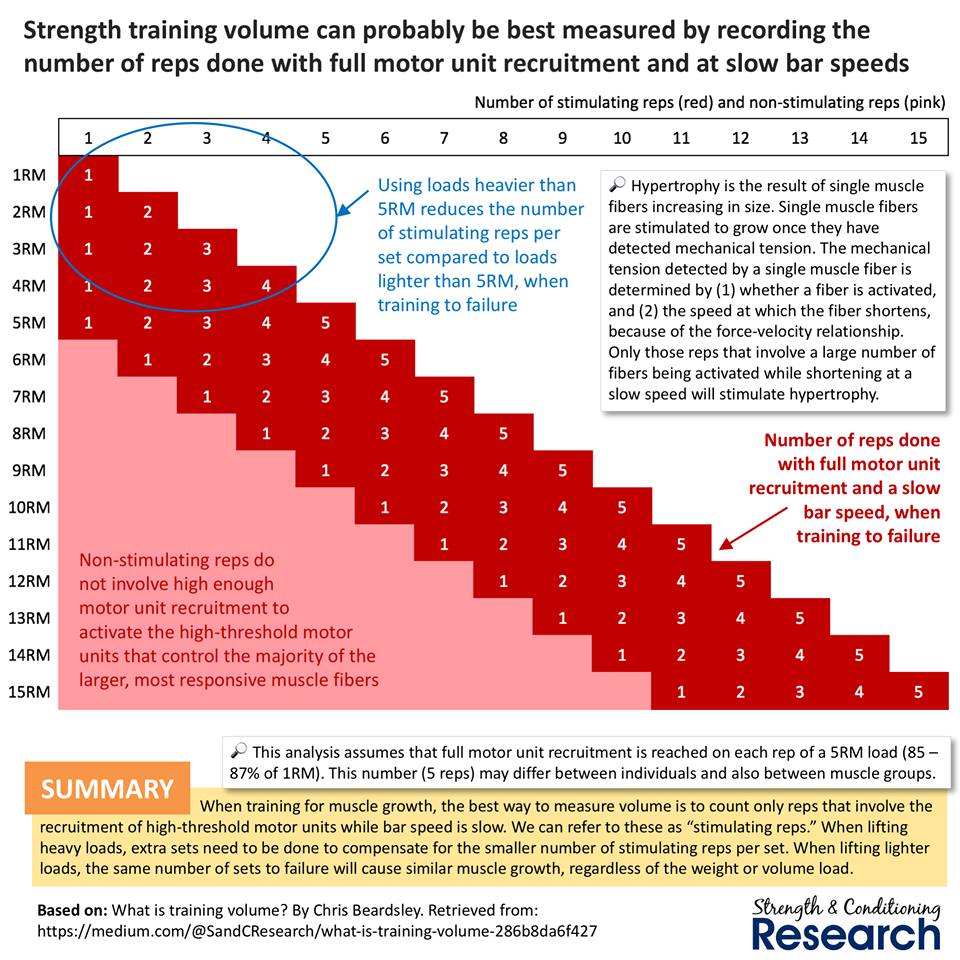Stimulating Reps = Effective Reps which is the goal of Myo Reps but accomplished in the shortest amount of time:



That's really cool, thanks for sharing, and makes sense.
I tried to look, but I wonder what Lyle was saying about this one. Is he not a fan? I know he's big on load driving hypertrophy etc, to me this study sort of confirms that in way, but says that there's a way to train which acts in a similar way to heavier weight training (obviously with metabolic stress, but with those heavy duty fibers being called into action).
I'm confused about what they mean here: "Only those reps that involve a large number of fibers being activated while shortening at a slow speed will stimulate hypertrophy."
Wouldn't it be shortening at a high speed that stimulates it better?
First off, Lyle's personality dictates that he tear apart anything he has not come up with. He is pretty good on diets but I tuned him out years ago on hypertrophy when he did a complete flip flop on HST without explanation after enthusiastically supporting it.
That statement is confusing and I think counter to what is intended and another phrase used which says "Number of reps done with full motor unit recruitment and a slow bar speed, when training to failure" seems to indicate slow for both concentric and eccentric movements. I would stick with fast concentric and slow eccentric.
What I take away from it is you can go heavy with time in between to recover (if your tendons and joints allow it) or use light weights as an activation set and then with little rest continue to use the same weight and create effective reps as in Myo Reps which put less strain on tendons but still induce growth.
Hmm yeah what you say makes sense. I can't see that every rep that's not near failure is not effective. And yeah makes sense that force production for activation is higher before failure (tension is tension), I guess its pointing out that those fibers that are called more into action near failure are the same as those when using heavier loads, thus stimulating those more.There are however, some nuances missing in this idea....
Load per MU, speed slowing as force drops isn't always increasing tension per MU but 'maintaining' tension , aka tension is tension
All reps are 'effective' for the first recruited MU, most for the slightly later in recruitment order, etc.
also, we can't have opposing thoughts 'both ways', if force drops per mu with fatigue, we can't then say that later since rep speed slows that tension is increasing for that same MU. If force drops, then tension per fully active MU is higher BEFORE failure. And we know it drops, otherwise recruitment wouldn't have to increase with fatigue to make up for lost force from earlier recruited motor units. So the bar slowing near failure, is merely a way to maintain force, not increase tension per fiber.
However, I'm quite sure the tension per MU is not the key stimulus, but the act of losing force is logically what would stimulate a need for more force generating ability (hypertrophy).
Hmm yeah what you say makes sense. I can't see that every rep that's not near failure is not effective. And yeah makes sense that force production for activation is higher before failure (tension is tension), I guess its pointing out that those fibers that are called more into action near failure are the same as those when using heavier loads, thus stimulating those more.
But then is that saying tension is INCREASED in them? Or just that they are now more fully active/recruited than they were compared to earlier in the set? I dunno!
Ahhh ok yep [emoji106]From the way I understand it, and it seems logical.. as the reps progress, fibers lose force 'at the current rate coding level', so it increases to maintain that force.
What I think of, is say using an 80% load, where all motor units are recruited for the whole set. So each motor unit is responsible for some percentage of total force, as fatigue happens, the load is still the same, it's still the same number of fibers (all of them), so force per fiber (or per MU) must still be the same, just the rate coding is higher to 'keep' that current force level. When fatigue is so high that even with full out max rate coding, it can't be maintained, then failure occurs.
BUT, that has to be the main external stimulus, why would a muscle need to increase fibrils unless it was 'shown' that the current number wasn't enough to maintain force...
I think the basic premise is exactly what I presented when I introduced the concept of "effective reps" back in the day. This is not to say that the reps leading up to those last 3-5 reps don’t do anything, and I don’t think that’s what Beardsley is implying either - but people seem to want to make it a black/white type of model and then debate something that has never been said (which Lyle is an expert on).
James Krieger just published a members-only article where he created a mathematical model of it, and I think this illustrates the concept even better. The first 5 reps of a set accumulate a growth-promoting stimulus that is approximately equal to the 6th and 7th rep.
Doing several submax sets, i.e. 5 sets of 5 at 70% load will produce hypertrophy because you accumulate fatigue, so sets 3, 4 and 5 are very close to full recruitment on all reps.
Haha XDLyle comment = laughter with tears.
